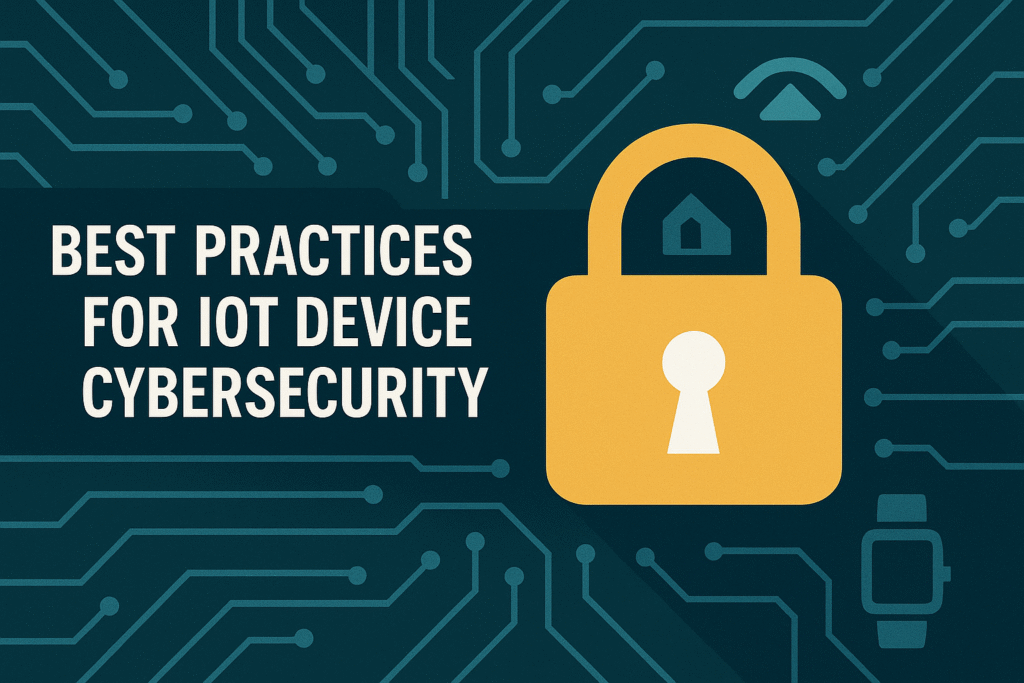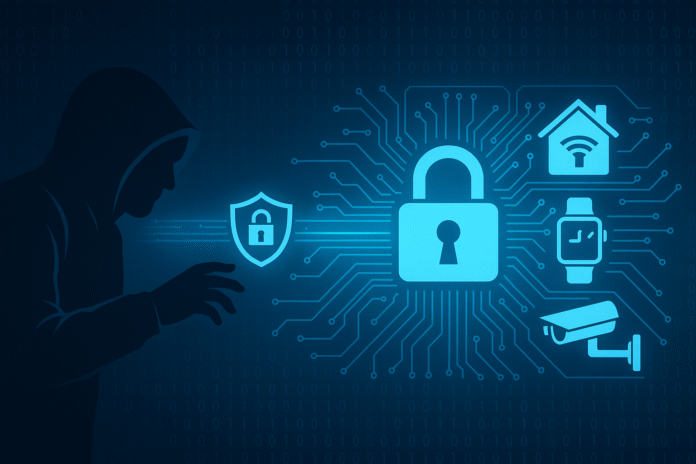The Internet of Things (IoT) has transformed homes, industries, and cities by embedding digital intelligence into everyday objects. These devices—ranging from smart thermostats and wearable fitness trackers to industrial sensors and medical monitors—connect and share data across networks. As IoT technology evolves, so does the need to secure it. Cybersecurity is no longer an afterthought. It must be a core design principle from the initial concept to manufacturing and deployment. With that in mind, pcb design plays a foundational role in securing IoT devices, as it influences the device’s hardware-level defenses and communication channels.
As billions of devices connect to the internet, each becomes a potential entry point for attackers. Weak default credentials, unpatched firmware, or insecure communication protocols can lead to devastating consequences—data breaches, identity theft, physical damage, and even national security risks. This article outlines the best practices for IoT device cybersecurity, addressing the current security landscape, vulnerabilities, and methods to mitigate risk.
Best Practices for IoT Device Security
Securing IoT devices requires a layered strategy that incorporates hardware, software, and network protocols. A single point of failure can compromise the entire system, so cybersecurity must be built into every layer.
1. Secure PCB Design and Hardware Configuration
Security starts at the hardware level. During pcb design, engineers must consider tamper detection, secure boot mechanisms, and physical access restrictions. Components like hardware-based random number generators (TRNGs), trusted platform modules (TPMs), and encrypted storage chips help protect sensitive data on the device.
Secure debugging interfaces are also essential. Leaving test access ports like JTAG or UART unprotected is a common vulnerability. Designers should disable or password-protect these interfaces before production.
2. Unique Device Credentials and Secure Onboarding
Many IoT attacks originate from unchanged default usernames and passwords. Manufacturers should assign each device a unique set of credentials. During onboarding, mutual authentication between the device and network should take place—using secure keys or certificates to establish trust before communication begins.
Support for Public Key Infrastructure (PKI) and integration with identity and access management (IAM) tools can simplify credential management across large device fleets.
3. Implement Secure Boot and Code Signing
Secure boot ensures the device only runs firmware verified by the manufacturer. Each firmware image is signed with a private key, and the device uses a stored public key to authenticate the image. This blocks attackers from executing modified or malicious firmware.
Code signing is equally important for firmware updates. If updates are not signed and verified, attackers can inject their own code into the device.
4. Encrypted Communication Protocols
All data transmitted between devices, cloud servers, and mobile apps must be encrypted using strong protocols like TLS 1.3 or DTLS. Legacy or unencrypted communication protocols open up devices to man-in-the-middle attacks.
In constrained devices, lightweight cryptography algorithms (e.g., ChaCha20, AES-GCM, or ECC) are preferred to save on processing power while maintaining security.
5. Over-the-Air (OTA) Updates with Security Controls
IoT devices require regular updates to patch security vulnerabilities. OTA updates are ideal, but they must be secure. Updates should be authenticated using digital signatures, encrypted during transmission, and delivered from trusted sources.
Fail-safes such as update rollbacks and dual partitions allow the device to recover if the update fails. These features prevent bricking and maintain service continuity.
6. Monitor Devices and Implement Anomaly Detection
Post-deployment, devices should be continuously monitored for unusual behavior, such as unexpected data spikes, failed login attempts, or abnormal power usage. Anomaly detection systems can identify potential breaches in real-time.
Behavioral analytics combined with AI can detect deviations from standard usage patterns, helping organizations respond quickly to security incidents.
7. Principle of Least Privilege (PoLP)
Devices and services should only have the minimum access necessary to perform their tasks. This limits the potential damage if a part of the system is compromised. Network segmentation, sandboxing applications, and setting strict permissions for data access help enforce this principle.
8. Data Protection and Privacy Compliance
Sensitive user data collected by IoT devices must be stored securely and in compliance with laws such as GDPR, HIPAA, or CCPA. Data encryption, anonymization, and local data processing help reduce exposure. Consent mechanisms and transparency about data usage should be embedded in the user experience.

How to Secure IoT Devices
Securing IoT devices involves multiple stakeholders, including hardware manufacturers, software developers, network administrators, and end users. Here’s how each group contributes:
Manufacturers:
- Design secure hardware with tamper resistance.
- Implement unique credentials and secure provisioning.
- Provide regular and timely firmware updates.
- Follow security standards like NIST IR 8259 or ETSI EN 303 645.
Developers:
- Follow secure coding practices to avoid buffer overflows and injection attacks.
- Validate input and sanitize all user interactions.
- Use secure communication libraries.
- Integrate secure storage and cryptographic APIs.
Network Administrators:
- Deploy network firewalls and intrusion detection systems.
- Segment IoT devices from critical systems.
- Apply access control lists (ACLs) and VLANs.
- Monitor network traffic for unusual behavior.
End Users:
- Change default passwords immediately.
- Update firmware when prompted.
- Only purchase devices from reputable vendors.
- Disable unused features such as remote access or voice control.
Cybersecurity for IoT
The cybersecurity landscape for IoT devices is rapidly evolving. Traditional endpoint protection doesn’t always translate well to small, low-power devices. Instead, a holistic security model that includes physical protection, cryptographic integrity, and secure communication is necessary.
Several industry standards and frameworks guide organizations in implementing IoT security:
- NIST IR 8259: Outlines cybersecurity capabilities for IoT devices.
- ISO/IEC 27400: General guidelines for IoT security and privacy.
- OWASP IoT Top Ten: Identifies common vulnerabilities such as insecure web interfaces, lack of encryption, or insufficient privacy protection.
Security must be tested regularly through vulnerability scans, penetration testing, and red teaming. Independent audits improve transparency and help build customer trust.
Security Challenges in IoT
Despite best efforts, securing IoT devices presents ongoing challenges:
1. Limited Processing Power:
Many IoT devices have constrained resources. Implementing strong encryption or comprehensive intrusion detection systems may not be feasible. This calls for lightweight, efficient security solutions.
2. Lack of Standardization:
Different vendors implement different security features, leading to inconsistencies across device ecosystems. A lack of universal standards makes integration and risk management more difficult.
3. Long Device Lifespans:
Some devices are expected to run for years without replacement. If security features are not upgradable, the device may remain vulnerable long after support ends.
4. Supply Chain Risks:
Third-party components or firmware may contain hidden backdoors or vulnerabilities. Secure supply chain verification, component validation, and trusted sourcing are essential.
5. Mass Deployment Risks:
When thousands or millions of devices are deployed across a city or enterprise, a single vulnerability can scale into a widespread attack. Mass reboots or malicious botnet infections can disrupt operations at a national level.
How to Prevent Cyber Attacks on IoT Devices
Preventing cyber attacks requires proactive and continuous defense strategies. These include:
- Zero Trust Architecture: Never trust devices or users by default. Authenticate and verify continuously.
- Secure Manufacturing Practices: Use hardware security modules (HSMs) to generate and protect cryptographic keys during production.
- Threat Modeling: During development, identify potential attack vectors and mitigate them before deployment.
- Device Decommissioning Procedures: When retiring a device, wipe all stored data and disable network access.
- Education and Awareness: Train employees and end users on IoT risks and safe practices. Promote a culture of security across all departments.
Conclusion
Securing IoT devices is no longer optional—it’s essential. The interconnected nature of these devices means a single weakness can affect the entire network. Cybersecurity must be part of the conversation from day one of pcb design, not as an afterthought. Engineers, developers, and users all play a role in protecting the IoT ecosystem.
By applying these best practices for IoT device cybersecurity, organizations can minimize risks, protect sensitive data, and build resilient infrastructure. As IoT adoption increases, so too must our commitment to making these devices safe and reliable for everyone.
